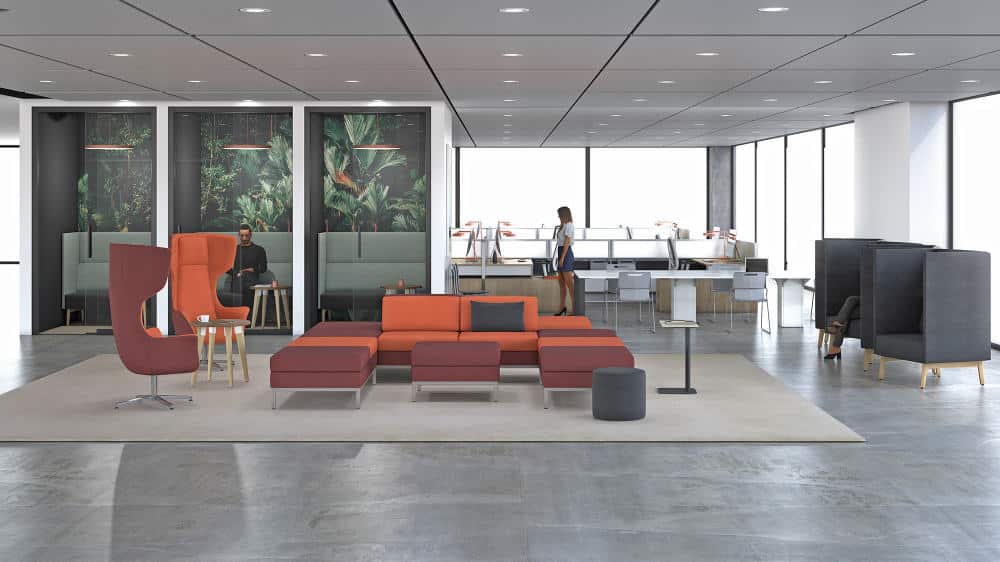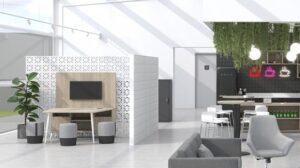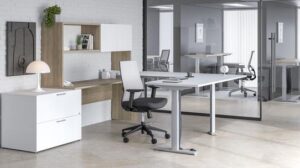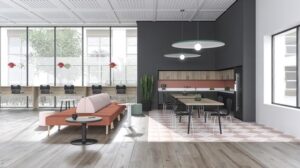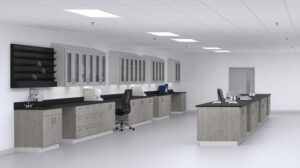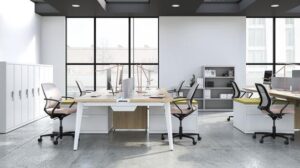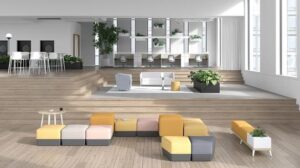As Gen Z rapidly becomes a dominant force in the workforce, their expectations are transforming how companies approach office interior design, corporate interior design, and, most notably, the use of modular furniture. Born between 1997 and 2012, Gen Zers are digital natives, champions of diversity, and advocates for flexibility, wellness, and purpose-driven work. Understanding how they interact in the workplace—and how modular furniture can meet their needs—is essential for any forward-thinking business.
Gen Z’s Unique Approach to Work
Gen Z brings a fresh, dynamic energy to the office. They expect more than a paycheck; they want meaningful work, a sense of belonging, and the ability to make a real impact. Their tech-savvy, digital-first mindset means they’re comfortable with AI-driven tools, instant communication, and collaborative platforms. Yet, they also crave in-person connection, with over half preferring office-based roles to fully remote work.
This generation values flexibility in where, when, and how they work. They want fluid schedules, hybrid options, and spaces that support both collaboration and focused solo work. Gen Zers also prioritize wellness, mental health, and sustainability, expecting their employers to reflect these values in everything from company culture to office interior design.
Why Modular Furniture Is Essential for Gen Z
Modular furniture is the backbone of adaptive office interior design and corporate interior design for Gen Z. Unlike fixed, traditional office setups, modular furniture is designed to be reconfigured, moved, and personalized on demand. This flexibility is exactly what Gen Z wants: spaces that can transform for team brainstorming, solo focus, or social recharging—all in a single day.
The benefits of modular furniture for Gen Z are clear. Flexibility is a top priority, as modular furniture allows for the easy rearrangement of workstations, meeting areas, and lounge zones to fit changing needs. Personalization is another key advantage, giving employees the freedom to customize their space and express their individuality and creativity. Tech integration is seamless with modular desks and tables that include charging ports, screens, and cable management, supporting Gen Z’s digital work habits. Wellness is supported through ergonomic, adjustable options that promote physical health and comfort. Sustainability is also a major consideration, with many modular solutions made from eco-friendly materials that align with Gen Z’s green values.
Modular Furniture Solutions That Resonate with Gen Z
Height adjustable desks are a staple of Gen Z-friendly office interior design. These desks allow users to alternate between sitting and standing, supporting movement, posture, and energy throughout the day. Gen Z appreciates the autonomy to set up their workspace for comfort and health, and these desks deliver. In a modular setup, height adjustable desks can be grouped for collaboration or separated for solo work, making them ideal for hybrid, flexible offices.
Collaborative tables and benching systems are also favored by Gen Z, who thrive on teamwork and open communication. Collaborative tables—long, shared surfaces with built-in power and data ports—make it easy for groups to gather, brainstorm, and innovate together. Modular benching systems can be reconfigured for large project teams or split for smaller pods, supporting agile work and spontaneous collaboration. In corporate interior design, these tables help break down hierarchy and encourage a culture of consensus and shared purpose.
Occasional tables are another essential in Gen Z-focused office interior design. Small, movable tables serve as coffee tables, meeting anchors, or side surfaces for laptops and snacks. Their portability means they can be rearranged for impromptu meetings, social gatherings, or quiet corners, supporting Gen Z’s need for fluid, multi-use spaces.
Lounge chairs and flexible seating are highly valued by Gen Z, who prioritize comfort, wellness, and informal interaction. Modular lounge chairs and soft seating provide inviting spaces for relaxation, creative thinking, or casual chats. Arranged in clusters, these pieces foster a sense of community and inclusivity, while also offering private nooks for those who need to recharge. Flexible seating—like bean bags or rolling chairs—caters to Gen Z’s desire for choice and movement throughout the day.
Lockers and personal storage have become increasingly important with the rise of hot-desking and hybrid work. Modular lockers give Gen Z employees a secure place for their belongings, supporting flexibility and reducing clutter. Integrated into benches or under desks, lockers also help define zones within open offices, contributing to a tidy, organized environment that Gen Z appreciates.
Stacking and nesting chairs are the ultimate in adaptability for Gen Z. These lightweight, movable chairs can be quickly set up for training, group meetings, or events, then stored away to open up space for other activities. In corporate interior design, these chairs make it easy to pivot between large gatherings and focused work, maximizing the utility of every square foot.
The Gen Z Office: A Modular, Purpose-Driven Space
For Gen Z, the ideal workplace is more than just a place to clock in—it’s a community hub, a creative studio, and a wellness center all in one. Office interior design and corporate interior design that leverage modular furniture empower Gen Z to do their best work while staying true to their values.
Gen Z expects their office to be flexible, with spaces and furniture that adapt to the task at hand. They want tech-enabled workstations with charging ports, video conferencing setups, and digital collaboration tools. Wellness-oriented features are a must, including ergonomic seating, standing desks, and areas for relaxation or mindfulness. Sustainability is also non-negotiable, with eco-friendly materials and green design practices. Finally, inclusivity is key, with zones for collaboration, privacy, and personalization.
Key Takeaways
- Modular furniture is essential in office interior design and corporate interior design for Gen Z, offering flexibility, tech integration, and personalization.
- Height adjustable desks, collaborative tables, lounge chairs, occasional tables, lockers, and stacking chairs all support Gen Z’s need for adaptable, wellness-focused spaces.
- Gen Z values purpose-driven work, digital connectivity, and sustainability—modular furniture helps deliver on these expectations.
- Creating a Gen Z-friendly office means designing for fluidity, inclusion, and continuous change.
Final Thoughts
Gen Z is redefining the workplace, demanding more flexibility, purpose, and inclusion than any generation before. By embracing modular furniture in office interior design and corporate interior design, companies can create dynamic environments that empower Gen Z to thrive. Height adjustable desks, collaborative tables, lounge seating, and personal storage solutions are more than just furniture—they’re the building blocks of a workplace where innovation, wellness, and community flourish. For organizations ready to attract and retain the best Gen Z talent, modular furniture is the key to a future-proof, inspiring office.
Frequently Asked Questions (FAQ):
Why does Gen Z prefer modular furniture in office interior design?
Gen Z values flexibility, personalization, and collaboration, and modular furniture allows them to create spaces that fit their work style and values.
What modular furniture is best for Gen Z in corporate interior design?
Height adjustable desks, collaborative tables, lounge chairs, occasional tables, lockers, and stacking chairs are all ideal, offering adaptability and comfort.
How does modular furniture support Gen Z’s focus on wellness and sustainability?
Ergonomic, adjustable designs promote health, while many modular pieces are made from eco-friendly materials, aligning with Gen Z’s emphasis on well-being and environmental responsibility.
